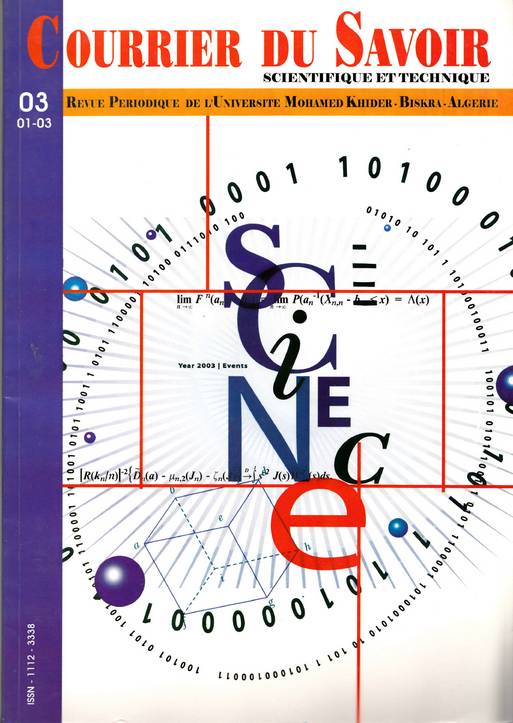BONDING ANALYSIS IN SOLID STATE COMPOUNDS: BORON CARBON OF RARE EARTH METALS
Résumé
The combination of boron and carbon elements with rare earth metals leads to the formation of materials having interesting
physical and structural properties. In theses compounds of formula MxByCz, The non-metal atoms form either two-dimensional
networks, or mon-dimensional zig-zag chains, or finite linear units of various length. The dimensionality of boron-carbon
sublattice is related to the average valence electron count (VEC) per light atom (B or C). The bonding properties of rare earth
metal boron carbide compounds are analysed by means of extend Hückel tight-binding calculations. Results indicate that these
compounds can be described in first approximation as being built of anionic units interacting with not fully oxidized metallic
cations.
Références
Chem. Rev. 1998, 723, 178 b) Halet, J.-F. dans
Contemporary Boron Chemistry ; Davidson, M. G;
Hughes, A. t.; Marder, T. B.; Wade, K.; Eds.; Royal,
Society of Chemistry : Cambridge, 2000, p 514. c)
Bauer, J.; Bars, O. J. Less-Common Met., 1983, 95,
267.
[2] a) Rogl, P.; Klesnar, H.. J. Am. Chem. Soc., 1992, 98,
99.
[3] Lahrech M. Thèse de l'Université de Rennes I, 1990.
[4] Markovskii, L.; Vekshina, N. V.; Pron G. F. Zh. Prikl.
Khim., 1965, 38, 245.
[5] a) Smith, P. K.; Gilles, P. W. J. Inorg. Nucl. Chem.,
1967, 29, 375; b) Fishel, N. A.; Eick, H. A. J. Inorg.
Nucl. Chem., 1969, 31, 891; c) Bauer, J.; Nowotny H.
Monatsch. Chem., 1971, 102, 1129; d) Bauer, J.;
Debuigne J. C.R. Acad. Sci., sér. C, 1972, 274, 1271;
e) Breant, T.; Pensec, D.; Bauer, J.; Debuigne J. C.R.
Acad. Sci., sér. C, 1978, 287, 261; f) Bauer, J.; Bars,
O. Acta Crystallogr., 1980, B36, 1540.
[6] Smith, G. S.; Johnson, Q.; Nordine, P. C. Acta
Crystallogr., 1965, 19, 668.
[7] a) Réf. 3c; b) Nowotny, H.; Boller, H.; Zwilling G.
Special Publication, 364, Solid State Chemistry,
National Bureau of Standards, Proc. 5th Mater. Res.
Symp., 1972; c) Bauer J., Debuigne J., J. Inorg. Nucl.
Chem., 1975, 37, 2473; d) Bauer J., J. Less-Common
Met., 1982, 87, 45.
[8] a) Rogl, P.; Fischer, P. J. Sol. State Chem., 1989, 78,
294; b) Bauer J., Ansel D., Bonhomme F., Gosselin
Ph., J. Less-Common Met., 1990, 157, 109.
[9] 8. Rogl, P.; Bauer, J.; Debuigne, J. J. Nucl. Mat.,
1989, 165, 74.
[10] Rogl P., J. Nucl. Mat., 1979, 80, 187.
[11] Loth, L.; Nowotny, H.; Benesovsky, F.; Rudy, E.
Monatsch. Chem., 1961, 92, 794.
[12] Hoffmann, R. J. Chem. Phys., 1963, 39, 1397;


